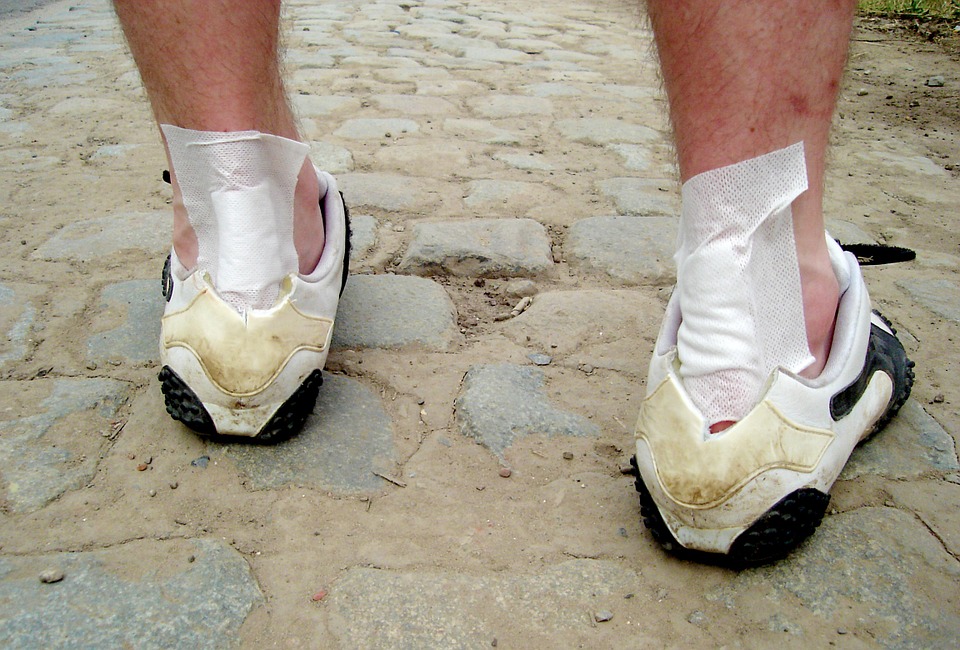Heel Pain
Heel pain is a common foot condition. It’s usually felt as an intense pain when using the affected heel.
Heel pain usually builds up gradually and gets worse over time. The pain is often severe and occurs when you place weight on your heel.
In most cases, only one heel is affected, although estimates suggest that around a third of people have pain in both heels.
The pain is usually worse first thing in the morning, or when you first take a step after a period of inactivity. Walking usually improves the pain, but it often gets worse again after walking or standing for a long time.
Some people may limp or develop an abnormal walking style as they try to avoid placing weight on the affected heel.
What causes heel pain?
Most cases of heel pain are caused when a band of tissue in the foot, known as the plantar fascia, becomes damaged and thickens.
Plantar fasciitis is the medical term for the thickening of the plantar fascia.
The plantar fascia
The plantar fascia is a tough and flexible band of tissue that runs under the sole of the foot. It connects the heel bone with the bones of the foot, and acts as a kind of shock absorber to the foot.
Sudden damage, or damage that occurs over many months or years, can cause tiny tears (microtears) to develop inside the tissue of the plantar fascia. This can cause the plantar fascia to thicken, resulting in heel pain.
The surrounding tissue and the heel bone can also sometimes become inflamed.
Read more about the causes of heel pain.
When to see your GP
See your GP or a podiatrist (foot problems specialist) if you’ve had persistent heel pain for a number of weeks and it hasn’t cleared up.
They should be able to diagnose the cause of your heel pain by asking about your symptoms and medical history and examining your heel and foot.
Further tests will only usually be needed if you have additional symptoms that suggest the cause of your heel pain isn’t inflammation, such as:
numbness or a tingling sensation in your foot, which could be a sign of nerve damage in your feet and legs (peripheral neuropathy)
your foot feels hot and you have a high temperature (fever) of 38°C (100.4°F) or above, which could be a sign of a bone infection
your heel is stiff and swollen, which could be a sign of arthritis
Possible further tests that may be recommended include blood tests, X-rays, a magnetic resonance imaging (MRI) scan or an ultrasound scan.
Who gets heel pain?
Heel pain is a common foot condition. An estimated one in 10 people will have at least one episode of heel pain at some point in their life.
People who run or jog regularly, and older adults who are 40-60 years of age, are the two main groups affected by heel pain.
Treating heel pain
There are a number of treatments that can help relieve heel pain and speed up your recovery. These include:
resting your heel – avoiding walking long distances and standing for long periods
regular stretching – stretching your calf muscles and plantar fascia
pain relief – using an icepack on the affected heel and taking painkillers, such as non-steroidal anti-inflammatory drugs (NSAIDs)
wearing well fitted shoes that support and cushion your feet – running shoes are particularly useful
using supportive devices – such as orthoses (rigid supports that are put inside the shoe) or strapping
Around four out of five cases of heel pain resolve within a year. However, having heel pain for this length of time can often be frustrating and painful.
In about one in 20 cases, the above treatments aren’t enough and surgery may be needed to release the plantar fascia.
Read more about treating heel pain.
Preventing heel pain
Being overweight can place excess pressure and strain on your feet, particularly on your heels. Losing weight and maintaining a healthy weight by combining regular exercise with a healthy, balanced diet can be beneficial for your feet.
Wearing appropriate footwear is also important. Ideally, you should wear shoes with a low to moderate heel that supports and cushions your arches and heels. Avoid wearing shoes without heels.
Read more about preventing heel pain.
